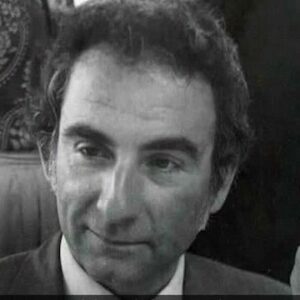Leon N Cooper is an American physicist who is most known for his work on the BCS theory, the first successful and widely accepted superconductivity hypothesis. He worked on it with John Bardeen and John Robert Schrieffer, two other American physicists. The trio was awarded the ‘Nobel Prize in Physics’ in 1972 for their contributions. In the BCS theory, he discovered that when normal conditions predominate, electrons repel each other, whereas, in superconductors, they are pulled towards each other. Cooper electron pairs are a concept named after him. He also looked into the brain and central nervous system, as well as the superfluid condition at low temperatures. Cooper, who is a ‘Thomas J. Watson Senior Professor of Science’ at Brown University, devised the BCM theory, which is the most precise model of synaptic plasticity to date. He is the Director of Brown University’s ‘Institute for Brain and Neural Systems.’ He was also awarded the ‘Comstock Prize’ in Physics by the ‘National Academy of Sciences’ in 1968 (along with John Robert Schrieffer), the ‘Descartes Medal’ by the ‘Academie de Paris’, ‘Université René Descartes, in 1977, the ‘John Jay Award’ by ‘Columbia College’ in 1985, and the ‘College de France Medal’ in 2000.
Childhood and Adolescence
Leon N Cooper was born in the United States on February 28, 1930.
He went to the ‘Bronx High School of Science,’ where he graduated in 1947.
Following graduation, he enrolled in ‘Columbia University,’ where he completed his formal education, earning a B.A. in 1951, an M.A. in 1953, and a Ph. D in 1954.
Leon cooper’s Career
He was a member of the ‘Institute for Advanced Study’ and an NSF Postdoctoral Fellow from 1954-55.
During the years 1955-to 1957, he worked as a research assistant at the ‘University of Illinois.’ He helped theorize superconductivity, which was first found by Dutch physicist and Nobel Laureate Heike Kamerlingh Onnes.
The abbreviation for the BCS theory was created by combining the first letters of the creators’ surnames, namely John Bardeen, Leon N. Cooper, and Robert Schrieffer, in that order. Cooper made his most major contribution to the BCS theory in 1956, while still in his twenties when he discovered that electrons, which normally repel each other, might be paired when temperature circumstances were exceedingly low. Cooper pairs are the name for this notion. The Cooper pairs break as the temperature rises above absolute zero.
He traveled to Ohio after his tenure in Illinois and served as an assistant professor at ‘Ohio State University from 1957 to 1958.
He was hired as a professor at ‘Brown University in 1958. His academic career progressed steadily. In 1962, he was named a university professor, and in 1966, he was named the ‘Henry Ledyard Goddard University Professor.’ Since 1974, he has served as Thomas J. Watson, Sr. Professor of Science at the institution.
He was a Research Fellow of the Alfred P. Sloan Foundation from 1959 to 1966.
He was a Fellow of the John Simon Guggenheim Memorial Foundation from 1965 to 1966.
The ‘Centre for Neural Science’ at Brown University was founded in 1973 to study the human brain and the nerve systems of animals. Cooper was named the Center’s inaugural Director that year, and its interdisciplinary staff was drawn from a variety of departments, including Biomedical Sciences, Physics, Mathematics, and Linguistics.
Cooper, together with other university faculty members, postdoctoral and graduate students, is currently attempting to better understand brain functions, particularly memory, in order to develop a scientific model of how the human mind works.
He co-founded Nestor, Inc. in 1975 and currently serves as its co-chairman.
He has been awarded seven honorary doctorates. He is a member of the American Philosophical Society, the National Academy of Sciences, and the American Association for the Advancement of Science, as well as an associate member of the Neuroscience Research Program. He is also a member of the US Defense Department’s ‘Defense Science Board.’
He is a member of the ‘American Academy of Arts and Sciences,’ ‘Phi Beta Kappa,’ ‘Sigma Xi,’ and ‘American Physical Society,’ among other organizations.
He is a member of the ‘Federation of American Scientists Board of Sponsors, as well as the ‘International Neural Network Society’s Executive Committee and Governing Board.
‘An Introduction to the Meaning and Structure of Physics (1968), ‘The Physics and Application of Superconductivity’ (1968), ‘Introduction to Methods of Optimization’ (1970), ‘Methods and Applications of Linear Programming (1974), ‘Physics: Structure and Meaning’ (1992), ‘How We Learn, How We Remember’ (1995), and ‘Theory of Cortical Plasticity (1995) are among his books (2004).
Personal History and Legacy
He is a happily married man with two children.
Estimated Net worth
Leon Cooper’s estimated net worth is $ USD 9 million, with a primary source of income as a university professor and physicist. We don’t have adequate proof of Leon Cooper’s automobiles or Leon Cooper’s way of life.
Trivia
The fictitious character Sheldon Cooper, played by actor Jim Parsons, appears in the American comedy ‘The Big Bang Theory,’ developed by Bill Prady and Chuck Lorre and broadcast on CBS. The character is partly named after him and partly after actor-producer Sheldon Leonard.


